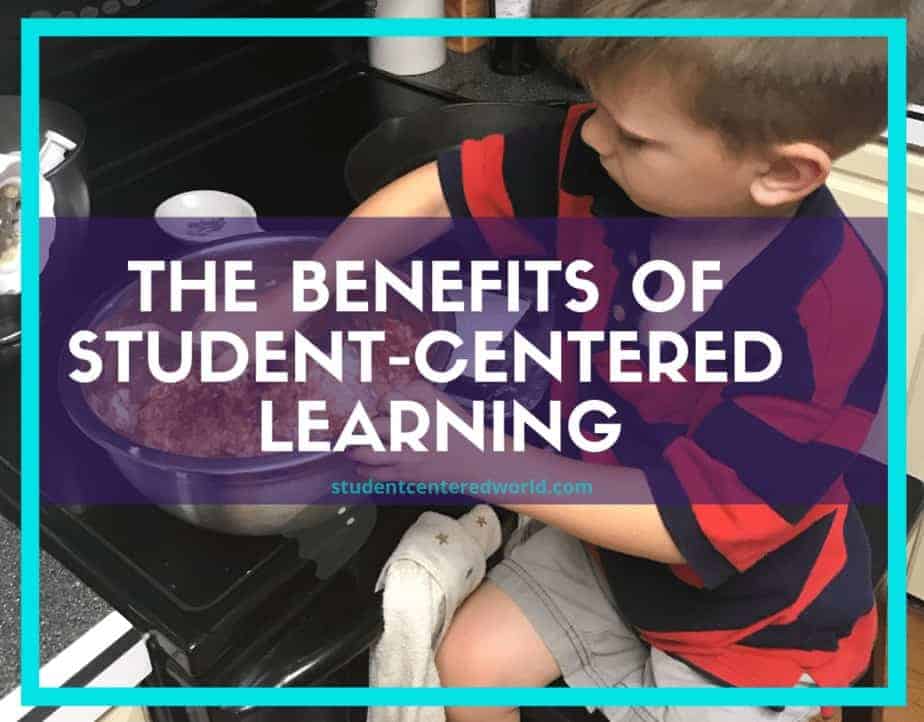5 Solid Ideas for Improving Full Class Engagement
As a teacher, you know how magical it is when all of a sudden you realize that every student in your classroom is actively participating in the lesson you have crafted. You know that on that day, you won the battle and the information is sticking. However, there is nothing worse than when you have full anticipation of this scenario and the exact opposite happens. What can you do to make sure the former is the norm? Here are five ideas to keep in mind to keep you on the path to full class engagement.
Create a strong classroom environment.
As teachers, we can’t change what happens outside of our class or even in other classes in the building. However, we can create an environment that is engaging and allows the students to act freely. It’s a delicate balance between allowing space for exploration and having a clear structure. The key lies in knowing your class and how much “wiggle room” they each need with the freedom to explore.
Having your students write their names on the board is not engaging. However, something as simple as changing the class name to “Dinosaurs in class” to transform a math class into an adventure is engaging. Create class experiences that go beyond simply sitting at desks learning information. When you engage your class, they will be more engaged.
Students learn by watching. You must model class engagement and enthusiasm every chance you have as a teacher. If you dislike how you are teaching a particular topic, that sentiment will inevitably trickle down to your students.
When talking about a particular topic, stand up and show them how to be engaged. This creates a direct correlation between your behavior and what they should do when learning in class. It also helps to break down this association between class participation and being called on.
Try out different teaching strategies to see which works best for your students.
You may have a class that responds better with Socratic questions, another class that does not respond well to this format and prefers listening only or something else entirely. You need to know what works best for your class before moving on. Each class is different so you must be willing to try out new strategies every time you teach a class.
Instead, focus on class engagement in general. Many teachers may feel that they have to get every student participating in class or else they aren’t doing their job correctly. However, when we create class objectives based on class participation, it will inevitably lead to grade inflation and students feeling that class participation is the sole factor in getting a good grade. Remember those class objectives should be based on learning and not class engagement.

It may feel more comfortable to focus on class participation because it can oftentimes boost confidence, but you need to pay attention to how students are feeling when they leave class. Are they excited to tell their friends about class? Are they asking questions outside class even if it isn’t related to the class that day? By changing the class objective from class participation to class engagement, you will create a better overall classroom environment.
Research shows that students lose focus every seven to ten minutes and will only regain attention 20 minutes later if the class is not engaging during that time.
When you are getting ready to teach, spend less of your class prep time worrying about class participation and more time on how to be an engaging teacher who will make class the most enjoyable experience possible.
Finding ways to reward class engagement will make the class more enjoyable for students. When class is a place they enjoy being, it will be easier for them to focus and participate in class discussions.
When you are talking about class expectations as a whole class, or even as a subgroup of the class, there should be an element of “fun” in your teaching environment. Not only will the class be more engaging, but it will also get the class in a mindset of learning.
These incentives can come in many different forms such as class points for class participation, allowing them to plan class activities, or even letting them decide what they want to do on free days.
Another way you can encourage class engagement is by being empathetic toward class participation. Many class periods will have several students who know the material but never participate in class for fear they may sound stupid or look dumb when you call on them. If you respond kindly and reassure these students that class participation does not equal stupidity, then they will be more likely to speak up and contribute to the class.
Encourage student participation in class discussions and projects by asking questions that get them talking
We may want to have a class discussion, but one student’s idea of class discussion may differ from the next. Also, it’s important to remember class engagement may not be the same throughout the class. The first day of class is always a little shaky as students try to figure out how far they can push their boundaries and still remain in class. Some days class engagement may be higher than others based on class topics, class activities, or even the personalities of your students.
If you are looking for class participation, make sure that it’s structured class discussion so you aren’t just allowing the class to become unorganized chaos. As teachers, we work our hardest to make the class engaging, but there are going to be those days where it is hard to keep the class interesting because of outside factors. It’s important not to lose sight of making class enjoyable as well as helpful when class participation may seem lacking during a session.
By asking questions that get students talking, class participation and class engagement will be at their highest during class discussions. Instead of waiting for students to begin a class discussion, ask them how they feel about the topic or what they know about the subject.
These questions allow class engagement because students are being asked to speak more than just simply answering a question from you. Asking them how they feel about the class material, or how the class is going for them allows students to feel more comfortable in class and confident they will not make a mistake while speaking. This gives your class the chance to express their opinions and also interact with each other.
Also, asking students what they know about a topic or subject will sometimes give you new insight into class discussions. This class engagement is class participation as the students will feel more included in a class discussion and class projects since they are involved in class from the start, even before class begins.

Finding ways to get your class actively engaged can be done through many different avenues during class time depending on student personalities, class topics, or overall class attitudes toward you. Finding class activities that are engaging can be a fun way of class participation as students become involved in class before, during, and after class. Classes can become even more interesting if you reward encouraging class engagement with class points instead of dishing out class participation incentives.
Rather than calling for class participation as a whole, engage each student one at a time. For each student, think about the 10 different ways they can be involved and have them do those things in class. This will give you class-wide engagement without making it feel like required class participation at all.
By class discussion, activities, points, or projects, each student will feel involved in the class and be more willing to engage in discussions and activities rather than sitting quietly because they think it’s not their place to speak up. Class engagement is vital for class participation because if students are engaged in class, student success will be much more consistent. If students feel like they have a say in class from the beginning, class discussion will flourish and class projects will be enjoyed by all parties involved.
Give students choice in what they do in class
I am a huge promoter of student choice (which is NOT a free for all experience in the classroom! It is very guided by the teacher at all times). The key is to give your students options, but be sure to include an assignment that will require thought-provoking work on their part. Give class assignments and class projects enough class time to complete, but don’t set an exact time limit. Make sure that class discussion isn’t just ‘all work’ – I know for me personally, class participation will always be more enthusiastic when class is fun, so class activities seem to be the best way of accomplishing this.
Using class discussion boards or class blogs is a great way of class engagement as students will be able to show what they’ve learned throughout class and discuss class material with each other. It may seem easier for you to just assign the class an essay at the end of class, but if you allow your class the option of sharing their knowledge through discussion, participation will be much more consistent.
Putting class projects together as a class can also work really well, whether students are putting their class project on the class blog or simply creating class discussions about each topic they’re working on for the class project. With each student having the chance to discuss what they’re doing, sharing classwork becomes collaboration among peers, and that is definitely a skill they will take with them in the future.
Discussion boards or blogs can also help class engagement with projects. Having assignments and projects posted on a class blog allows students to coordinate their efforts while working in class on the same project so that they can all work together. This allows classmates to become familiar with each other outside of class time, and students will feel more comfortable after working on a class project together.
Mix up the way you teach material so it doesn’t become boring or repetitive. Mixing activities up will keep the class interesting. As a student, I always preferred class projects or class discussions to taking notes. In the classroom, it’s much easier to work with peers than on paper alone, and working together seems to be more successful than simply talking to your class. You’ll also find that students will be more willing to help each other in class than they are on paper because it is more fun to participate with your peers around.
Try different class activities and/or class assignments that you think might be fun for your class
I have used many class projects throughout my classes because I believe class projects are the activity that works best for class participation. I’ve found class projects to be the class activity that gets students the most excited because it is typically done with classmates and class coordination. It also allows every student in class to participate, rather than just a few people who have their hand up or are always eager to answer questions.
When I had class projects, class engagement was great because classmates helped each other, and work was completed at a much more consistent pace. Students are also much more willing to share solutions with each other when class projects are done cooperatively as opposed to individually.
The concept of project-based learning seems scary to many educators because it is outside of the norm of a. how we were taught and b. how we were taught to teach. However, with our current generation of students in the classroom, Generation Z, it really sparks their interest and gets them learning much more efficiently.

Another idea for increasing class engagement is using class competition. This allows class engagement to occur without you having to work as hard to orchestrate it. Class competitions spark class engagement naturally – with students who want to display their class pride and who may want to prove their class or group is the best – and it can be structured in many different ways. Class competitions can be as simple as class points, where students are rewarded class participation points for class discussion or activities that they participate in, then at the end of the class you simply tally up class points for one winner.
Class competition can also be class points based on class activities or class projects. The only class competition I’ve ever done personally is a class points system, but it worked well for me and encouraged class participation over the course of the school year.
Instead of class participation being the ‘expected class’ way to get class points or class bonus marks, make class participation an activity that is fun for students to participate in. Be sure to give class bonus marks every time you ask for class discussion or class activities so class points are not class-time dependent. If class participation is class-time based, then students will feel pressured to participate or they won’t earn class bonus marks.
When all else fails, class games seem to work well when you (or your students) are having problems getting enough class engagement. I always found class games to work almost like class project class assignment that encourages participation and class engagement.
Class games have worked well for me throughout my years of teaching because they hold class attention very well, and students will forget about their worries while playing them during class time. Games are a fun way to review class material or class discussion, and class participation is often high in class games.
Stop Driving the Teacher Struggle Bus
Are you struggling with student engagement, apathy, or keeping your class on track?
💫💫 There’s hope! 💫💫
Join my free teacher workshop “Choosing Choice” and in just 60 minutes, you’ll craft a practical plan to revitalize your teaching. Discover the magic of student choice in boosting engagement, gain quick implementation ideas, and explore strategies for year-long success.
Unlike overwhelming workshops, my approach guides you in real-time, providing more classroom options, reducing stress, and giving you more personal time.
Plus, you’ll earn a 1-hour professional development certificate and have 7 days of access.
Don’t miss this chance to transform your teaching; click below to secure your spot now!






